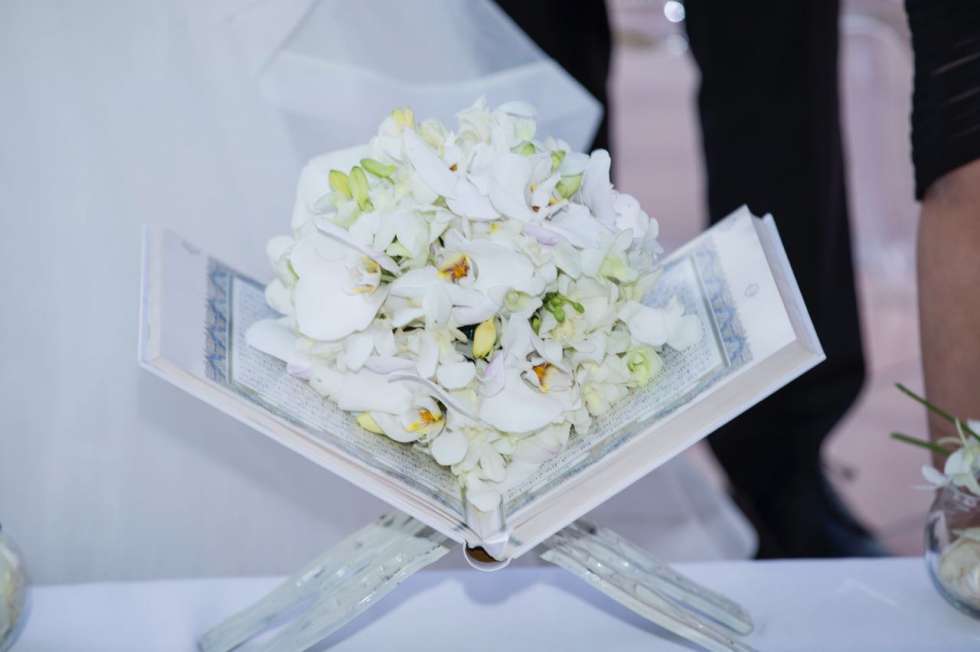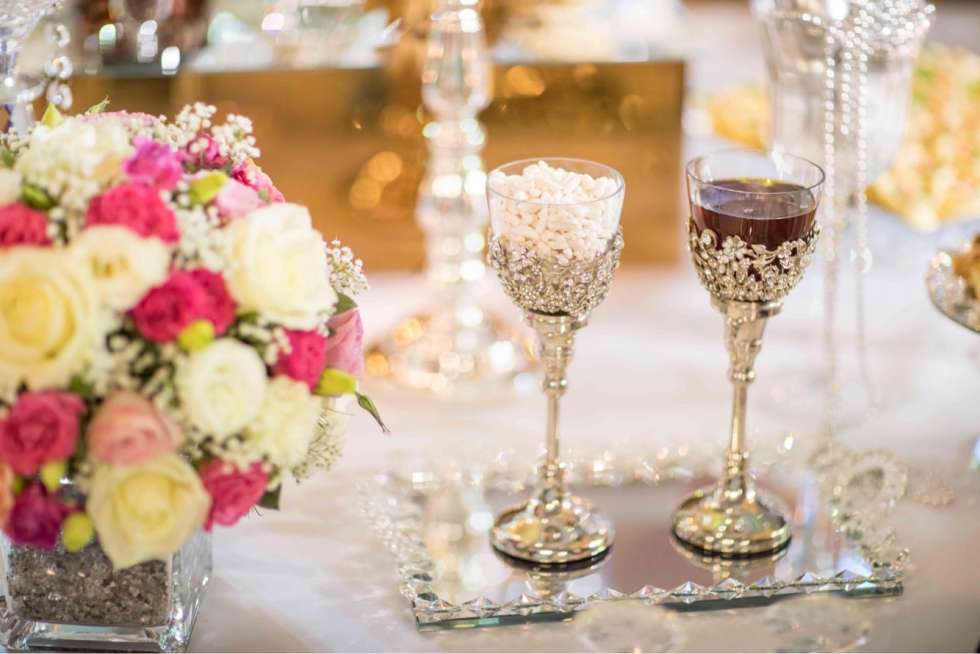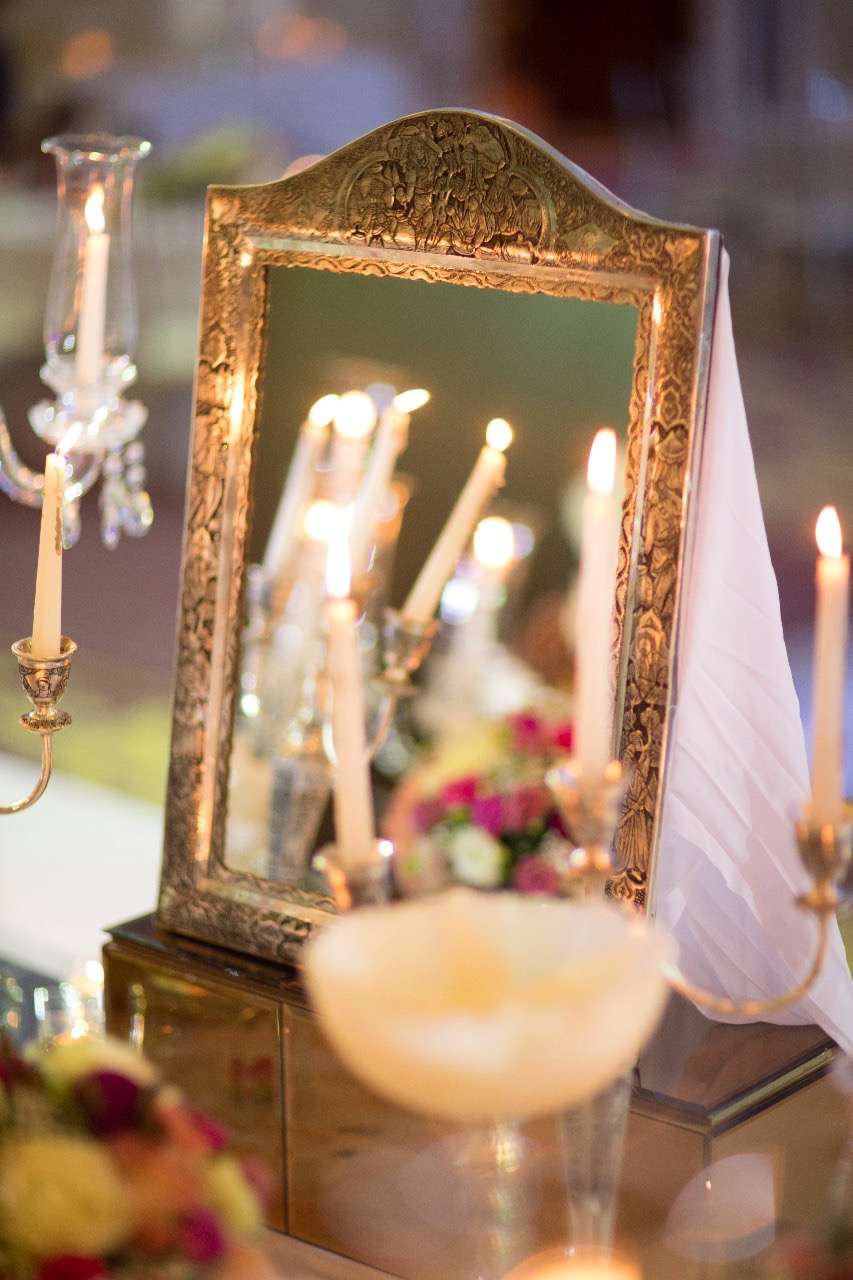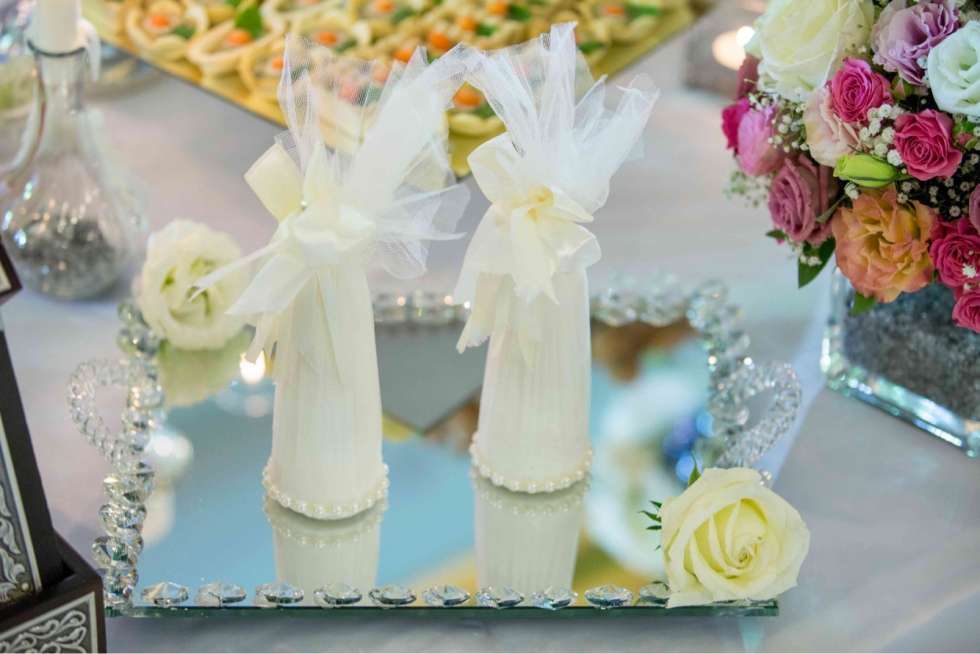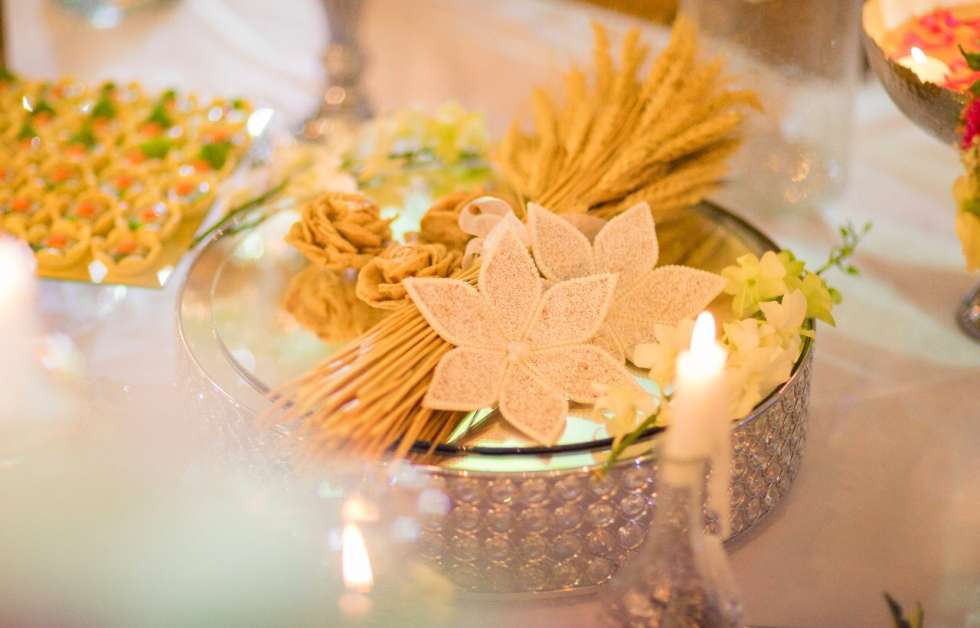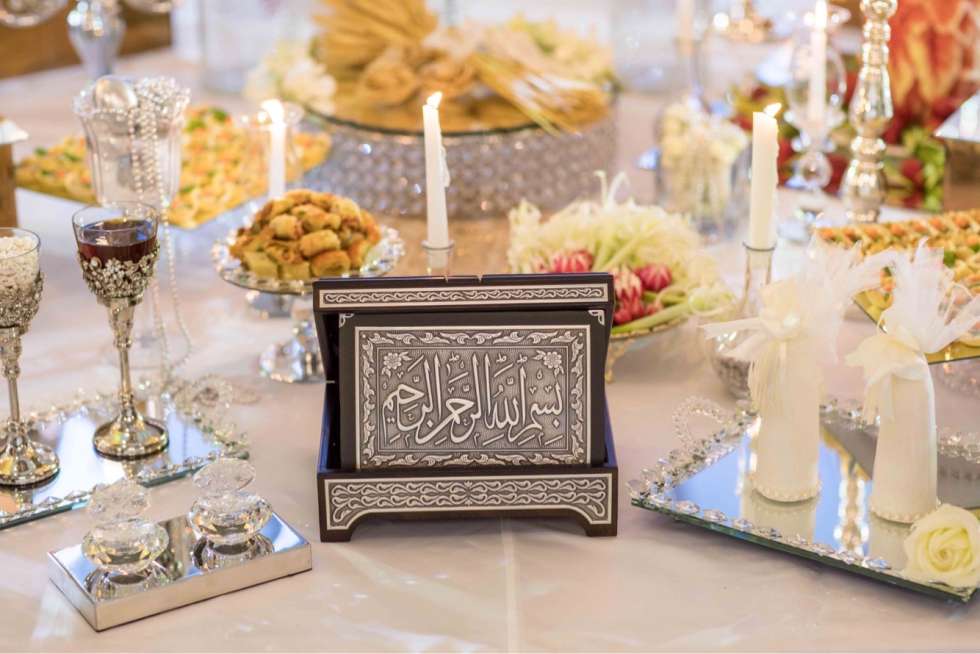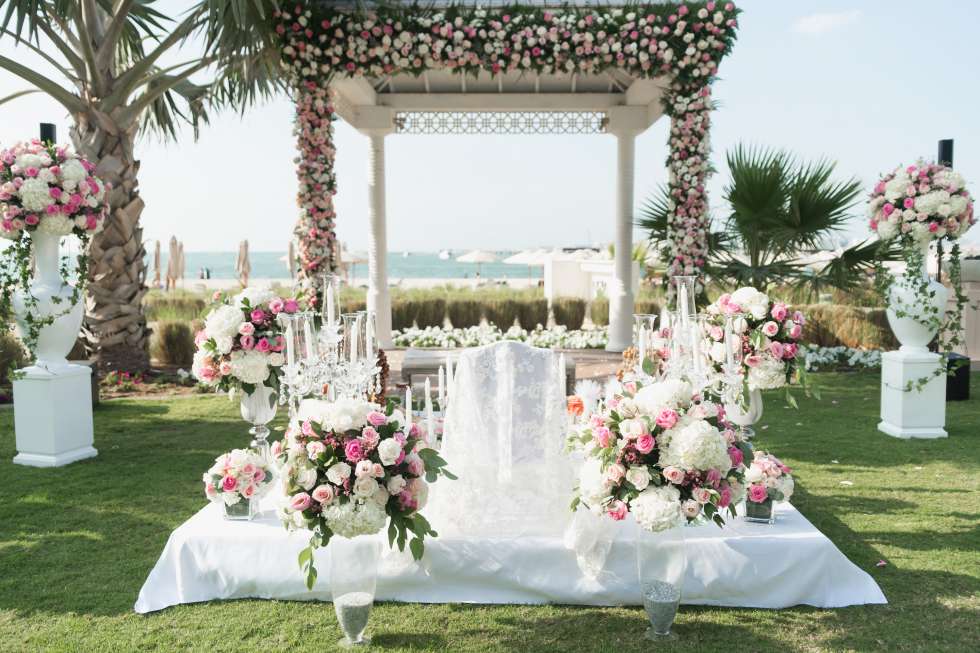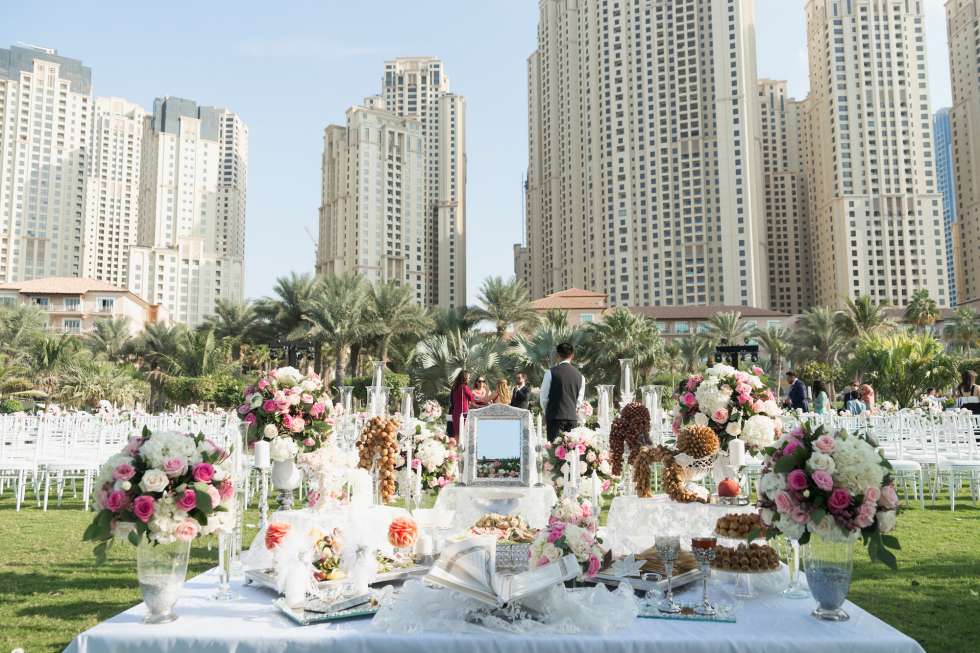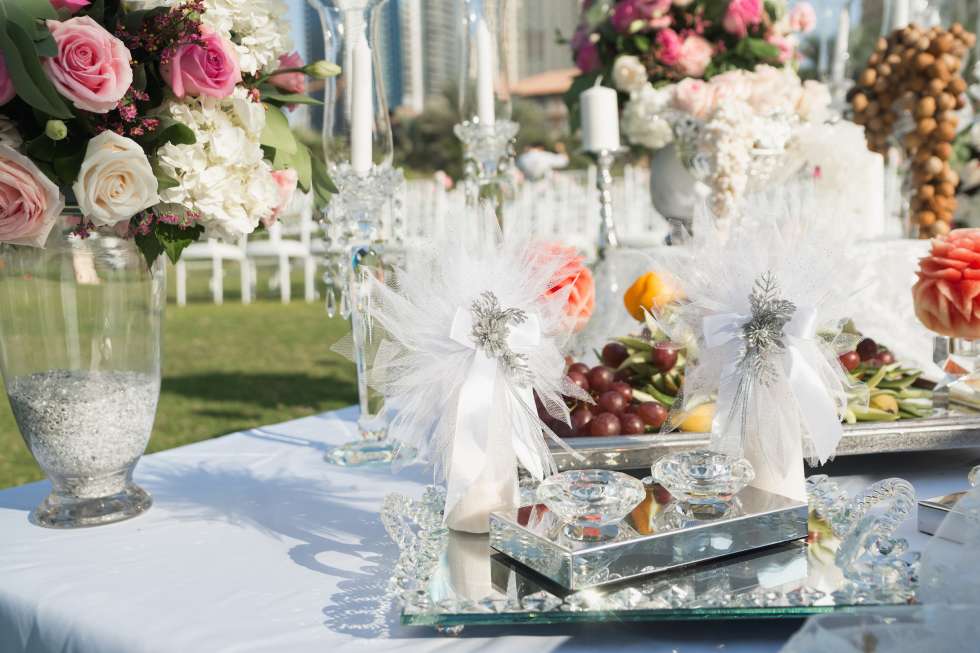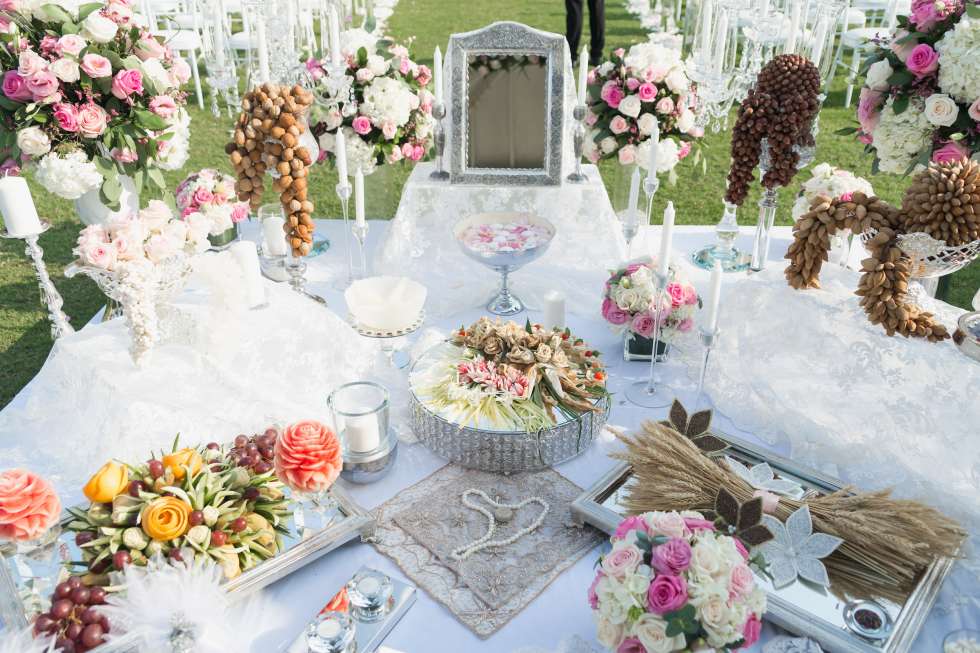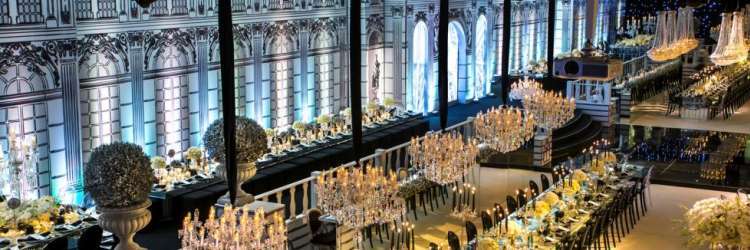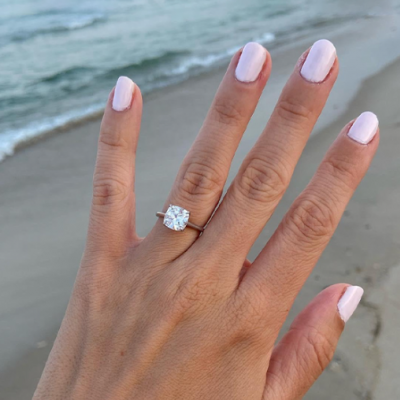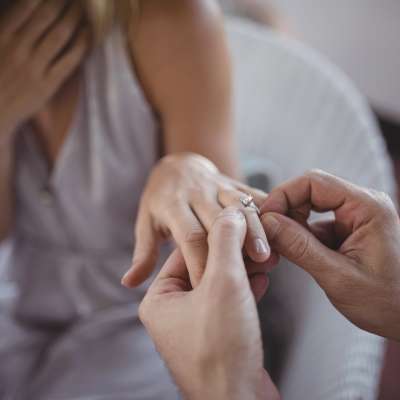Understanding Sofreh Aghd in Persian Weddings
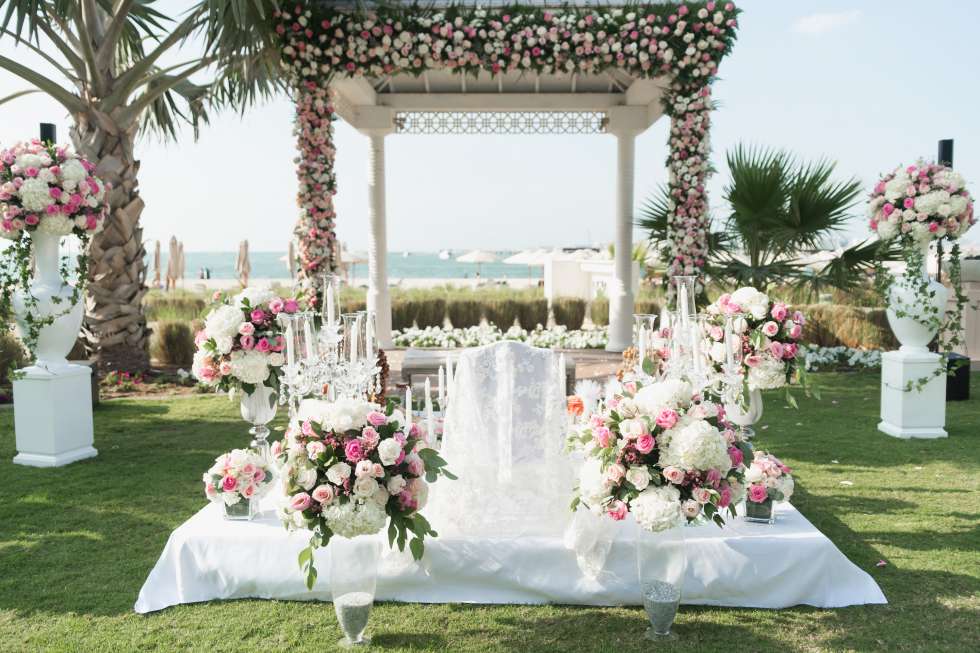
The Sofreh Aghd is a traditional Persian wedding ceremony that is still alive and loved by guests who get a chance to be invited to a Persian wedding. This ceremony is followed in over 95% of Persian weddings, regardless of how modern the couples are. Sofreh Aghd holds a significant place in Iranian culture. It acts as a symbolic representation of blessings, wishes, and prosperity for the newlywed couple.
If you are not Iranian or have never attended or planned an Iranian wedding ceremony, you may not be familiar with "Sofreh Aghd". In Farsi, the word "sofreh" means 'spread' and "aghd" means 'ceremony'. This ceremonial tradition has been practiced for thousands of years by Iranian families around the world to celebrate their culture and heritage.
There are many symbolic items that make up the Sofreh Aghd spread such as a mirror, honey, spices, sugar canes, and more. Here is a simple diagram of the main components of Sofreh Aghd:
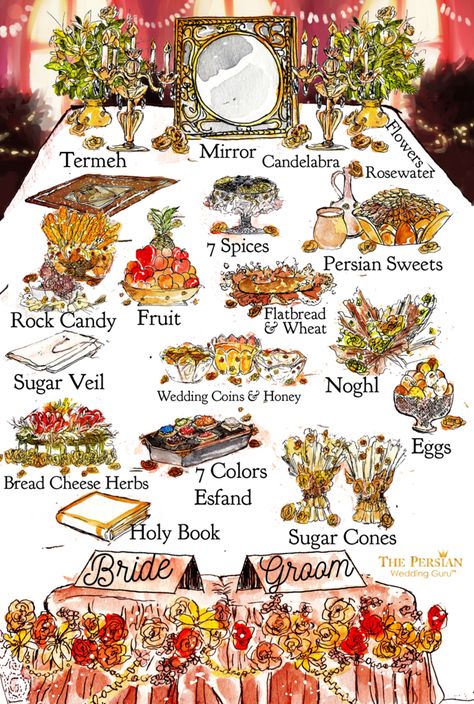
Let's look closer at the elements of Sofreh Aghd and the symbols they represent for the couple’s new and happy life together.
Interested in Indian Weddings? Read: The Anatomy of an Indian Wedding
Traditionally, the Sofreh Aghd was set on the floor over a ceremonial cloth made of fine and fancy fabric, and it used to take place only at the house of the Mother of the Bride. Nowadays, the modern version of Sofreh Aghd is to display it on a table with a unique style and design selected by the couple reflecting their personality and likes.
The direction of the Sofreh Aghd is set towards sunlight, therefore, the Bride and Groom face the light during the ceremony. One of the precious moments during the ceremony is the entrance of the Bride walking down the aisle with her face covered by a light veil until she says YES. Only then did the Groom lift the veil and reveal his wife's face to the guests.
The ceremony usually takes 45 to 60 minutes and is led by a person who plays the celebrant role. It can be a Moula (a religious man) or a close and respected old family member. It is a tradition until today that gifts from close family and friends, which are either gold or money, are presented to the Couple directly after the Sofreh Aghd ceremony. Other guests who brought gifts to give to the newlywed couple can present them anytime during the wedding reception that follows the ceremony.
So much more to be shared about this wonderful wedding tradition in Iranian culture, but the best way is to witness it with your own eyes. Do not miss a chance to see the Sofreh Aghd ceremony and experience this wonderful culture if and when the opportunity arises.
Check out these beautiful Iranian weddings:
- The Silk Route: A Global Love Story in Dubai
- A Persian Garden Wedding Full of Romance in Dubai
- A White Persian Wedding Dream in Dubai
- A Charming Iranian Wedding in Dubai
Article contributed by Mahtab Doorbash, Founder of Event Land UAE | Partner of Lana Wedding Planner.
A Mirror (Ayneye-Bakht):
A mirror is a symbol of purity, light, and brightness. The first thing that the Groom sees in the mirror during the Sofreh Aghd ceremony is the reflection of his wife after she removes her veil. It represents bringing light and brightness into the future of the married couple.
One of the most cherished moments occurs when the groom gazes into the mirror and, for the first time, sees the unveiled reflection of his bride. This tender gesture signifies the couple stepping into their shared future, illuminated by love, honesty, and mutual respect. The unveiling marks the shedding of any uncertainties, reinforcing the idea that the marriage will be built on transparency and radiance. The mirror’s glow symbolizes the couple’s journey toward happiness and light, serving as a guiding element in their new life together.
Image: La Luce: Tradition Meets Love in This Stunning Wedding in Dubai
Two Candelabras (Shamdan):
In a traditional Sofreh Aghd, candelabras hold significant symbolism. They represent light and fire, associated with energy, clarity, and enlightenment. The candles within the candelabras symbolize the light that guides the couple through their journey together, especially during challenging times. They represent hope and the ability to find their way even in darkness.
La Luce: Tradition Meets Love in This Stunning Wedding in Dubai
Traditional Persian Embroidered Cloth (Termeh):
A traditional Persian silk or embroidered cloth handed down from generation to generation is part of the Sofreh Aghd and symbolizes family and traditions.
Its presence on the wedding spread reflects the continuity of love, wisdom, and values that have been cherished by ancestors. The elaborate patterns and delicate craftsmanship of the Termeh are a testament to the artistry and dedication that define Persian culture, symbolizing the beauty and depth of the couple’s familial bonds. By incorporating this heirloom into the ceremony, the couple honors their lineage and invites the blessings of those who came before them, weaving their love story into the greater tapestry of their family’s history. The Termeh is more than just decoration; it represents the enduring strength of family ties and the timeless nature of traditions that will continue to shape the couple’s married life.
The Holy Book (depending on the Couple’s religion):
At the heart of the Sofreh Aghd lies the Holy Book, a powerful symbol of divine presence and spiritual guidance. Chosen based on the couple’s faith—whether it be the Quran, Bible, or another sacred text—the Holy Book reflects the couple’s devotion to their beliefs and their desire for God’s blessing on their union. Placed with reverence on the ceremonial spread, it signifies the importance of faith as the foundation of their marriage, offering strength, wisdom, and direction as they embark on this new chapter together.
The presence of the Holy Book is a reminder that the couple’s love is not only a bond between two people but a covenant made in the sight of God. By including this sacred element, the couple invites divine protection and grace into their lives, fostering a sense of peace and spiritual connection. The placement of the Holy Book also serves as a reflection of the couple’s shared values and moral compass, reinforcing the belief that their journey will be guided by faith, love, and mutual respect.
Image: La Luce: Tradition Meets Love in This Stunning Wedding in Dubai
More Table Details
Spice Tray (Sini-Ye Aatel-O-Baatel): A tray of seven herbs and spices to guard the couple against the evil eye.
Decorated Persian Flatbread (Naan Sangak): A decorative display of flatbread symbolizes prosperity for the feast and the couple’s life together. It can be accompanied by feta cheese and fresh herbs.
Decorated Eggs, Walnuts, Almonds, and Hazelnuts symbolize fruitfulness, fertility, and abundance. It is the hope to have a marriage as strong as the shells of these nuts.
Rock candy (Shakheh Nabat): This symbolizes a sweetened life for the newlyweds.
Honey (Asal): This represents sweetness in the couple’s life.
Two Sugar Cones (Kalleh Ghand): This is to shower the couple with sugar, symbolizing sweetness and happiness for a good life together.
Wild Rue (Espand): It is a herb that is burned as part of a ritual for purification. It is believed to keep away the evil eye and bring good health.
Sweets and Pastries (Shirini): This is for the sweetness of life.
Sugar Cloth (Tureh Ghand): A piece of silk or other fine fabric, to be held over the Bride and Groom’s heads throughout the ceremony by happily married female relatives and friends.
Image:
La Luce: Tradition Meets Love in This Stunning Wedding in Dubai
Iraqi Culture
In Iraq, the Sofreh Aghd reflects a blend of local traditions and Persian heritage, often serving as a meaningful way to honor familial roots and cultural connections. The symbolic items on the Sofreh, such as mirrors, candles, honey, and herbs, represent elements of life, purity, and sweetness, values that transcend borders and resonate deeply within Iraqi weddings as well. This shared tradition highlights the rich cultural exchange and interwoven histories between the two neighboring countries.
See: La Luce: Tradition Meets Love in This Stunning Wedding in Dubai
